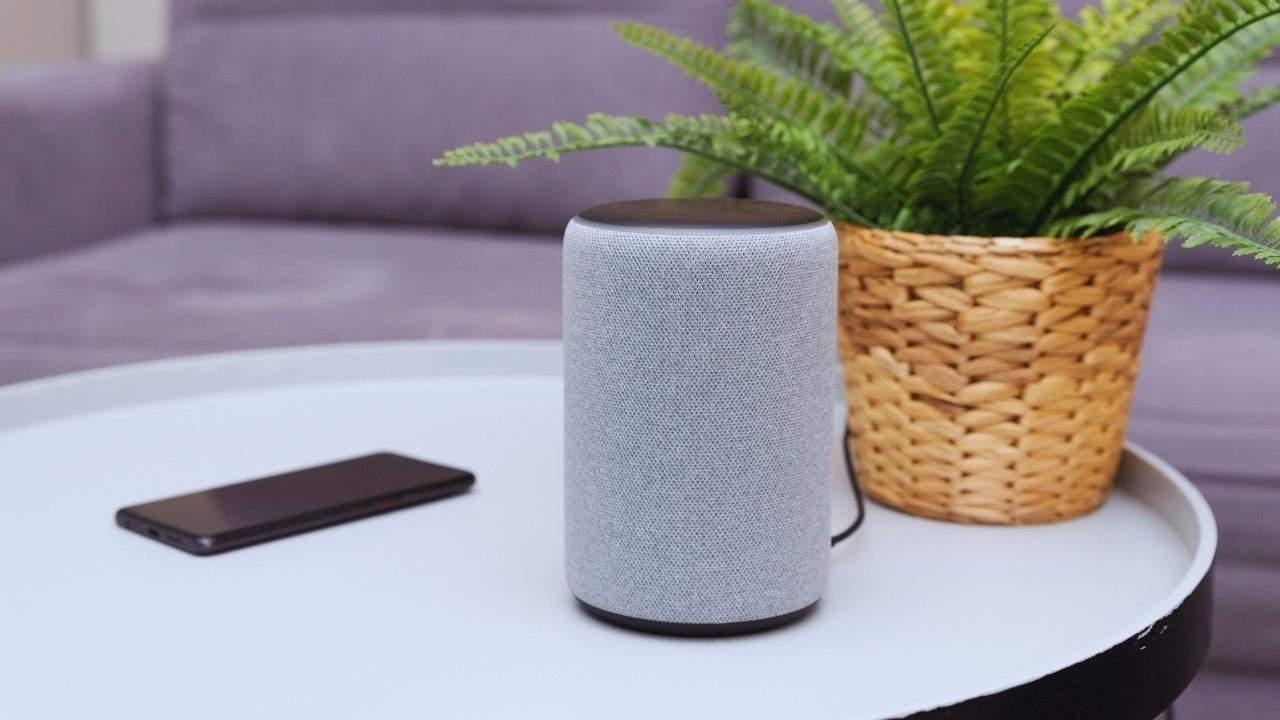
Post by : Anis Karim
When most people think of voice assistants, they picture smart speakers at home—devices you ask to play music, set alarms or control lights. But the voice-interface landscape is evolving fast. Advances in natural language processing, edge computing, expanded connectivity and smarter device ecosystems mean voice technology is shifting from “speaker gadget” to meaningful interface across contexts.
Voice tech is no longer just passive—waiting for you to speak—it is becoming ambient, proactive and integrated. It’s embedded in wearables, cars, enterprise systems, retail, industrial IoT and more. For writers covering technology and AI—especially with a focus in Asia and emerging markets—this shift opens new angles on how people interact with devices, how businesses adopt voice, and how regions leapfrog legacy interfaces.
Voice assistants are getting better not just at hearing you, but understanding you. Improvements in language models, context-tracking, accent and dialect recognition mean voice interfaces can operate in more varied environments and with more user types than before.
Instead of relying entirely on the cloud, more voice systems are processing speech locally or semi-locally. That means lower latency, less reliance on connectivity, better privacy and more robustness—even in lower-infrastructure regions.
From cars to headphones, factory machines to hospital systems, the device ecosystem is far broader now. Voice capability is being baked into more classes of devices—even ones you wouldn’t class traditionally as “smart speakers”.
Regions where literacy, keypad input or traditional interfaces are less comfortable are strong candidates for voice adoption. In multilingual, mobile-first societies, voice becomes a natural interface—especially for apps, commerce and services.
Businesses are realising voice interfaces can accelerate workflows, reduce friction, enhance safety and enable hands-free operation in contexts like manufacturing, logistics, healthcare and field service.
Voice tech is moving into devices like smartwatches, fitness bands, AR glasses or earbuds. These wearables now increasingly support voice commands, context awareness (who you’re with, where you are, what you’re doing) and proactive assistance. Imagine voice suggestions prompted by movement, heart rate or location.
Cars are a major frontier. Voice assistants are expanding beyond navigation and media, to deeper tasks: controlling vehicle systems, contextual suggestions based on travel pattern, interacting with outside-vehicle services (parking, charging, tolls), and integrating with smart-city infrastructure. The car becomes a voice-abled mobile living space.
While the smart speaker remains relevant, the voice interface is now extending across every connected device in the home: air-conditioning, appliances, security systems, lighting, water systems and more. The smart home hub is evolving into a voice-compatible environment rather than a single box.
Voice is making inroads into shopping, ordering, payments and service-desk contexts. In retail outlets, voice-enabled devices help customers get information, check inventory, transact hands-free or locate items. In e-commerce, voice search and voice commerce are growing rapidly, especially in multilingual markets.
In warehouses, factories and service teams, voice interfaces allow workers to remain hands-free, capture data by speech, receive verbal instructions, and interact with systems while working physically. This increases safety and efficiency. Voice is moving from “optional convenience” to “core interface”.
In markets with high mobile penetration, many languages and large populations who may prefer voice for accessibility or convenience, voice tech is taking off in new forms: voice search, regional dialect support, vernacular UI, voice-based commerce and service kiosks. These need less reliance on typing and more on natural speech.
Voice integrations must feel instant and accurate. Where delays or mis-recognitions occur, the user experience suffers. Smart integrations will leverage on-device processing or hybrid edge/cloud systems.
Especially in wearables or home contexts, voice systems that process locally or limit data sent to cloud earn trust. Users want comfort that their voice interactions aren’t endlessly recorded or misused.
The best voice systems will remember context: location, previous interactions, user preferences, device environment. They won’t just respond—they’ll anticipate.
Voice will often be combined with visuals, gestures, sensors and touch. Powerful integrations tie voice into broader device networks—not just “say this command” but “your watch noticed your running, do you want this playlist or route?”
In markets like India, Southeast Asia, Africa, voice integrations must handle many languages, dialects, code-switching, mixed speech. The evolution of voice tech in these regions will heavily depend on localisation.
For companies deploying voice interfaces, the question isn’t just “can we add voice?” but “does this integrate with our workflow or customer journey, reduce friction, improve outcomes?” Voice is increasingly becoming a strategic tool.
A smart speaker brand extending its assistant to integrate directly with major lighting and home-automation platforms, enabling voice control of devices beyond music or timers.
Wearable devices that listen to ambient conversation or movement and proactively prompt tasks or voice commands based on context.
Automobile manufacturers embedding voice systems that not only respond but suggest routes, parking, charging points, and coordinate with smart-city infrastructure.
Retail kiosks or self-service check-outs where customers interact with voice in native languages to transact or receive service guidance.
Industrial maintenance systems where technicians use voice to query machinery status, log maintenance, or receive verbal instructions without stopping work.
The voice-tech expansion is particularly relevant in this region because:
Huge mobile-first populations where typing and interfaces may still be barriers.
Many languages and dialects — voice opens access better than text.
Growing smart-home, smart-city and IoT markets meaning more device networks.
Business services, retail and commerce geared to vernacular interfaces.
Voice integration will likely leapfrog traditional UI models and create new service paradigms in these markets.
Noisy environments, overlapping speakers, regional accents, code-switching and mixed languages remain substantial hurdles for voice systems.
Wearables, edge devices, IoT networks require more power, better connectivity, and sometimes newer devices. In emerging markets, retrofit vs new-buy decisions matter.
Always-listening devices, ambient microphones and voice capture in public or private spaces raise big questions: where is the data stored, how is it used, can it be turned off?
Voice systems don’t work in isolation; they need to tie into apps, APIs, device firmware, enterprise systems. That means higher complexity and cost.
Voice as a primary interface works only when users trust it and change their habits. Devices must deliver consistent benefit to overcome inertia.
Companies must find real business benefit: cost-saving, customer experience improvement, new services. Adding voice for the sake of novelty won’t last.
Feature stories on specific integrations (wearables, cars, enterprise).
Regional case-studies of voice tech adoption (India, Southeast Asia, Africa).
Business angle: how companies are using voice as strategic tool not just gadget.
Technical deep-dives: edge voice processing, local language models, multi-device voice ecosystems.
Societal implications: accessibility, digital divide, privacy, new user groups.
Future outlook: what next horizons for voice – silent speech, gesture + voice, brain-interfaces?
The future of voice is far bigger than a box in your living room. It’s in the wearable on your wrist, the car you drive, the warehouse you walk through, the shop you enter, the home you automate, and the regional vernacular world seeking simpler interfaces.
For consumers, that means richer, more intuitive experiences. For businesses, it means a new interface layer that can differentiate and streamline operations. For writers and editors, it means a new story—less about “which speaker” and more about “which environment” and “what value”.

8 Long-Lasting Lipsticks That Stay Perfect Through Your Date Night
Check 8 long-lasting lipsticks that stay put for hours. Perfect shades for date nights, smudge-proof

Daily Glass of Coriander Seed Water May Help Reduce Bloating Naturally
Drinking coriander seed water daily may reduce bloating, improve digestion, and support gut health n

Trump Strikes Deal to Cut Obesity Drug Prices to $149, Expands Medicare Coverage
Trump announces deal to cut weight loss drug prices to $149. Medicare covers Zepbound, Wegovy from 2

British Grandmother to Leave Indonesia Death Row
Indonesia to repatriate Lindsay Sandiford, a British grandmother on death row for drug offenses for

Anushka Shetty Credits Yoga for Fitness: 7 Asanas to Boost Weight Loss and Metabolism
On her 44th birthday, Anushka Shetty shares yoga secrets. Learn 7 asanas to support weight loss, boo

EU to Question Shein Over Illegal Items on Marketplace
European Commission to meet Shein amid French probe on child-like dolls and banned weapons, ensuring

55 Injured in Mosque Explosion at Indonesian School During Friday Prayers
Dozens were injured in Jakarta after explosions rocked a mosque inside a school complex during Frida

The New Season Alert Maharani Season 4 Coming Soon
Maharani Season 4 arrives on SonyLIV with Huma Qureshi as Rani Bharti facing new rivals bold politic

Paramount+ to Stream PBR’s Top Bull Riding Series in 2025
Paramount+ secures 5-year rights for PBR's "Unleash the Beast," streaming live across 17 states from

Zohran Mamdani Victory Speech Goes Bollywood with Dhoom Machale
Zohran Mamdani wins NYC mayor race, becoming the city’s first Muslim and South Asian mayor, making h

UAE Life High Stress 3 Simple Ways Expats Can Manage Pressure
Expats in the UAE face daily pressure and burnout Learn 3 simple effective ways to manage stress fin

Smart Meal Prep in Dubai Save Money Stay Healthy
Plan smart eat fresh Discover how meal prepping in Dubai helps you save money eat healthy and enjoy

The Ultimate Guide to Dieting in Dubai Keto vs Vegan vs Mediterranean
Discover Dubai’s top diet trends Keto Vegan and Mediterranean Find which plan fits your lifestyle f

Stay Fit in Dubai 7 Fun Outdoor Workouts Without a Gym
Explore 7 fun ways to stay fit in Dubai from beach runs to desert hikes and skyline yoga No gym nee

Beyond Biryani: Mastering Portion Control in Dubai’s Melting Pot of Cuisines
Discover how to enjoy Dubai’s diverse cuisines wisely Learn simple portion control tips to stay heal